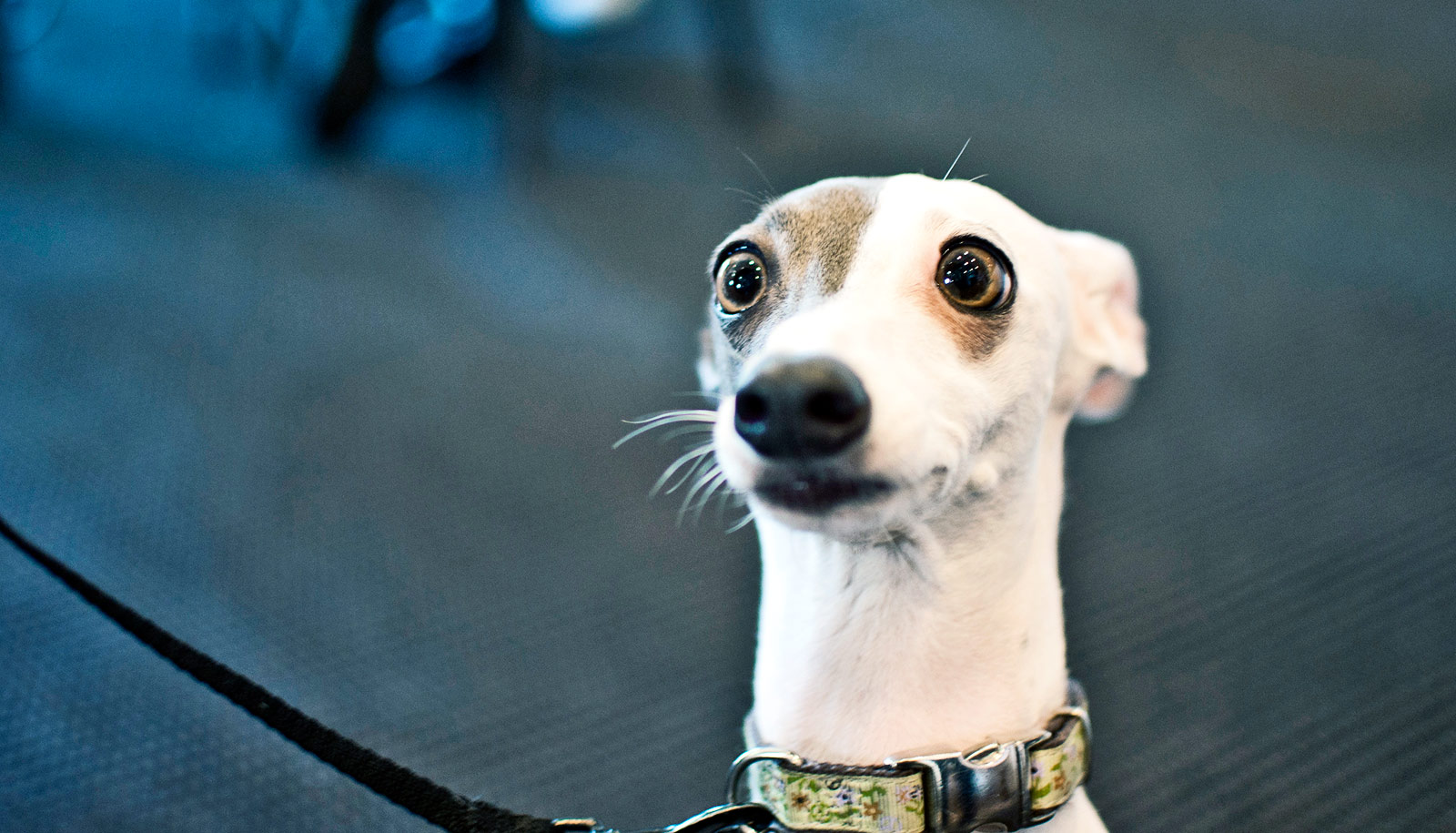Does your dog do this?
If your dog sounds like he’s trying to do an impression of a goose, there’s no need to rush to the vet or Google how to perform CPR on your dog; He’s just reverse sneezing! This also goes by the lengthy medical terms mechanosensitive aspiration reflex, inspiratory paroxysmal respiration, or pharyngeal gag reflex. Episodes of reverse sneezing can last from a few seconds to a minute or two. As soon as it passes, the dog’s breathing returns to normal and he behaves as if nothing happened. For most dogs, reverse sneezing is a more or less normal event.
Reverse sneezing is a fairly common condition in dogs. It happens more often in small breeds, due to their smaller throats and windpipes. Pugs, Bulldogs, and other flat-faced (or brachycephalic) breeds have elongated soft palates, which can make them more susceptible to reverse sneezing.
In a reverse sneeze, air is pulled rapidly in through the nose, and the sound is very different from the typical snort of a regular sneeze. The sudden, startling honk of a reverse sneeze makes many uninitiated dog parents think their pet is either choking or having an asthma attack, or even a seizure.
Reverse sneezing is caused by a spasm of the throat and soft palate. The spasm is triggered by an irritation to the throat, pharynx or laryngeal area. Some of the most common triggers include: excitement, pulling on the leash, air-fresheners or other household chemicals, sudden changes in temperature, or exercise intolerance. On rare occasions, a respiratory infection, chronic post-nasal drip, nasal polyps or other masses or foreign bodies in the nose or throat may cause the condition.
Reverse sneezing rarely requires treatment. As soon as the sneezing stops, the situation is resolved, but since these episodes can make your dog anxious, it’s important that you remain calm. If you flip out each time he reverse-sneezes, you can actually condition him to panic when it happens. One of the best things you can do for a dog who is reverse sneezing is to make a note of what he was doing and what the environment was like preceding the sneeze, to try to identify any triggers.
If you feel the need to do something more hands-on for your dog, you can try massaging his throat to stop the spasm. You can also try covering his nostrils very briefly. This will cause him to swallow, which usually helps clear the irritation and stop the sneezing. That said, these types of interventions are usually unnecessary and can even add to your dog’s stress… not to mention yours.
